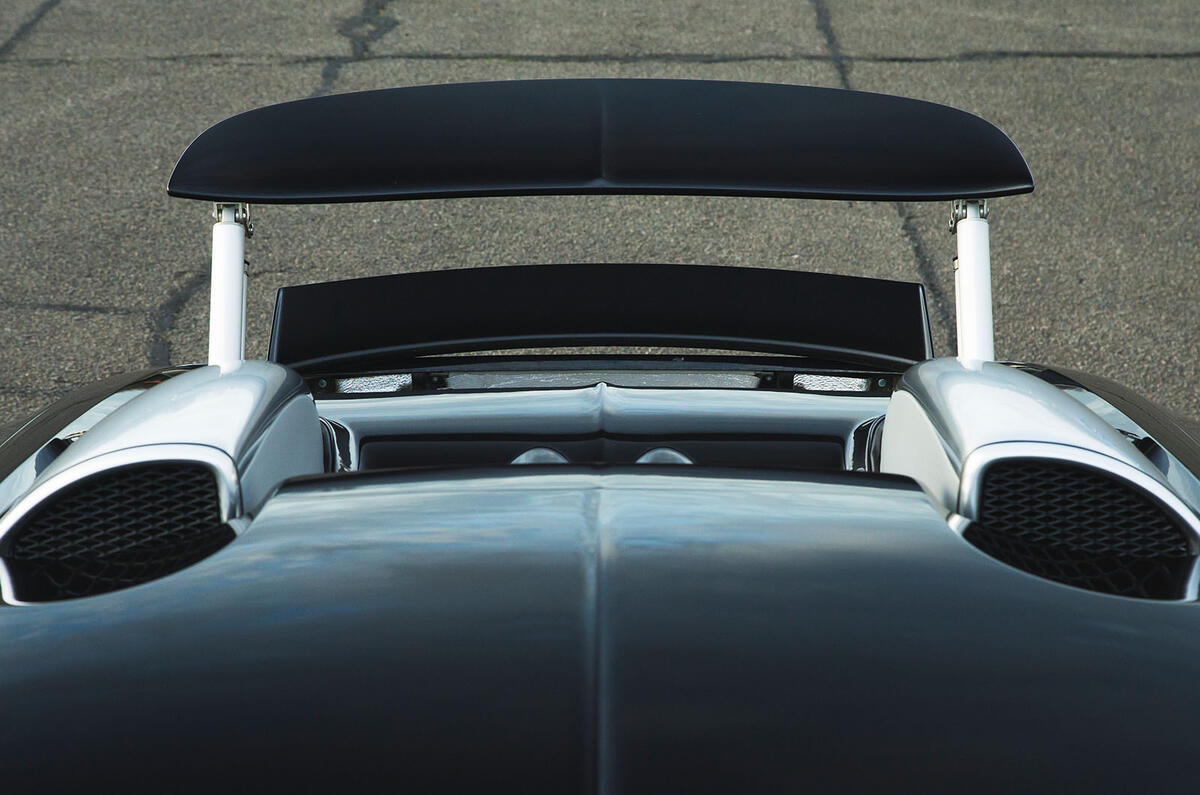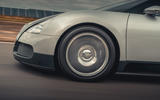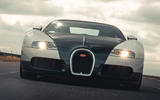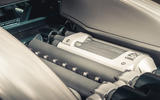People always gawp at unprecedented inventions that make the world seem like a smaller place. The locomotive, for example, the car, the aeroplane.
And then, in an admittedly chunky leap, the Bugatti Veyron of 2005.
At its world-shrinking top speed of 253mph, you could get from London to Glasgow in two hours. That would be without fuel stops, however; you would actually have to make those every 12 minutes.
There’s a good reason for this unrestrained (11mpg) thirst. Totals of 987bhp and 921lb ft come from an 8.0-litre, quad-turbocharged W16 engine, resulting in a 0-62mph time of 2.5sec.

The Veyron pulverised the then record holder, McLaren’s legendary F1. If you had a drag race and gave the F1 a head start to 125mph, the Veyron would still hit 200mph first.
An even faster edition would follow in 2010, called the Super Sport, hitting 267mph with a streamlined body, an elongated, flattened engine cover and a power increase to 1184bhp. Targa-top versions of the original Veyron and the Super Sport arrived in 2009 and 2012, called the Grand Sport and Grand Sport Vitesse.
But let’s rewind to the Veyron’s development in the late 1990s. It was the brainchild of Volkswagen Group chief Ferdinand Piëch, who decided to reinvigorate Bugatti and engineer the world’s fastest car – sketches of which were allegedly done on the bullet train from Tokyo to Nagoya.
To power it, engineers mated two Audi-derived V8s and used 10 radiators for cooling, each costing £6000. Those two ducts you see on either side of the engine bay? They supply the turbos alone.
Covering that was a timeless, slippery body. Sauber’s wind tunnel was chosen to sculpt said body, but it could test only to the 220mph V-max of Formula 1 cars, so Bugatti instead had to use another facility. Little is known about it, but we do know it had a 9046bhp, eight-metre-wide fan.

Then along came Pierre-Henri Raphanel, Bugatti’s chief test driver. The ex-F1 racer drove the Veyron 11,000 times across 23 countries. To him, every aspect was “shocking” – but in a good way, from its braking performance to its traction and interior luxury.
“One of Piëch’s engineering requirements for the Veyron was that it had to be classy and refined enough for its owner to take his wife to the opera in it,” he said.
What’s more, the Veyron wasn’t a trailblazer only because of this ferocious attention to engineering.
Around bends, it handled with almost inconceivable grip and composure, using permanent four-wheel drive and 20in tyres. In town, it felt no more dangerous to drive than a Volkswagen Polo and, at high speeds, felt as stable as any aeroplane.

Speaking of aircraft, the interior felt and looked as if Air Force One’s presidential suite had been restyled by Liberace. High-grade leather sat against magnesium indicator stalks and a phenomenal sound system to make it worthy of an £840,000 asking price.
Extremely expensive it was, then, and it’s even more so today - and there are other drawbacks. Rearward visibility is limited and right-hand drive was never offered.
We won’t dwell on that though, and instead celebrate the Veyron for what it is: a groundbreaking ground-hugger that makes the world seem half as big as it is. It may have been a costly, one-off technical exercise, but so was Concorde. And that shrunk the world too.
What we said then
2 March 2011: “The lack of drama you experience behind the wheel makes the sensation of endless acceleration even more surreal than it sounds. Even in the dry, you can sense the four-wheel drive system apportioning torque if you use the throttle with some enthusiasm. Yet it’s not especially intimidating. Such is the accuracy of the steering and suppleness of the ride that you can thread it down most roads like other sports cars.”

Buyer beware
Recalls: You wouldn’t think this would fall victim to a recall, but fuel gauge issues meant some cars were sent back. The gauge would tell the driver they had a full tank even when they didn’t, which is an issue in such a thirsty car. Another recall affected around 100 cars built between 2006 and 2010 whose aluminium panels fitted underneath could have corroded and fallen off. Therefore ensure the underside is in good condition. If not, have it rectified by a dealer as soon as possible.
Jack plates: On certain cars made between 2006 and 2010, the plates responsible for taking the car’s weight when it’s jacked up are too weak, so the jack can become embedded in the chassis. Ensure this replacement has been carried out if necessary.
Rear bumpers: If you’re buying a car that originally came from the UAE or the US, it will have a squared recess for the rear plate instead of a rectangular one.
Gearbox: Make sure this has been checked by a Bugatti specialist before you buy, because it has to regularly survive 921lb ft of torque. A new one can cost upwards of six figures.

Wheels and tyres: To prevent the risk of cracks forming in the alloy wheels from underuse and to ensure they are equipped to handle 250mph, the wheels have to be replaced along with every third set of tyres at a cost of around £52,000. The tyres themselves are bespoke Michelin Pilot Sport PAXs, a set of which costs around £30,000.
Also worth knowing
The engine is sealed so accessible only to Bugatti-registered dealers. This means you’re out of luck if you want to conduct your own service or tinker with it at the weekend.
Servicing is hugely expensive and must be carried out at Bugatti's factory in Molsheim, France, the firm recommends.
An oil change alone will cost upwards of £16,500. Bugatti customers had to pay a mandatory annual fee of around £10,000 for detailing in order to keep the bodywork in a suitable condition. If you’re taking on a used Veyron, we would suggest abiding by that detailing regime.

How much to spend
£850,000-£949,999: Earlier cars from 2007 with 15,000-20,000 miles, in typical specifications and actually driven.
£950,000-£999,999: Newer cars from 2009 with mileages below 10,000, plus one customised example from 2006 with bespoke alloys and an aftermarket exhaust.
£1,000,000 and above: Grand Sport and Grand Sport Vitesse editions from 2013 and 2014 with mileages as low as 2000. Primarily these are investment opportunities.
One we found

Bugatti Veyron, 2007, 18,000 miles, £899,989: This prime example has been well cared for with a full Bugatti service history. However, judging by the mileage, it hasn’t simply been treated as a collector’s item.































Join the debate
Add your comment
Are you taking the p ! ss?
Are you taking the p ! ss?
If you ever see one consider yourself lucky, they don't harm the Planet as your made by the thousand cars that you and I drive, yes, most Veyron will be hardly run in, yes new Tyres will cost the same as your new car( tyres are changed for safety reasons not much leagal limit Rubber is left on them) and frankly, if you can afford a Veyron then running it isn't going to worry you, you'll probably own five or ten cars anyway, they'll probably be in other countries in properties, so, they've got a great life, owners won't care what or who says about a Car, it's inverted snobbery, people who generally rubbish cars like this wouldn't say no if they suddenly become seriously wealthy.